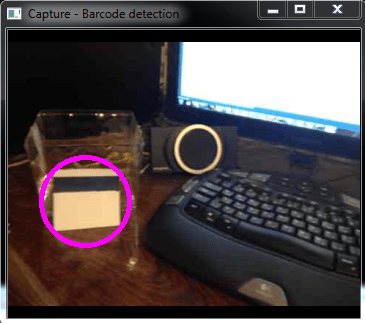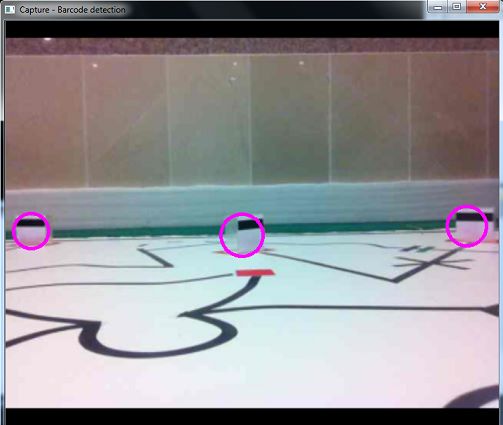The aim for this little project was to detect a pre-defined barcode object, from an arbitrary image, in an unknown lighting condition.
The input image sequence was taken from an iPhone attached to a mobile robot.
The main work is done by the Haar feature detector. Many positive (containing barcode), and negative samples are fed into the trainer. Then the trainer extracts Haar-like features, and uses them to form the training data.
The training data is then used in real-time to decide whether the features extracted from the current image represent a barcode or not.
The detected barcodes are then passed to the tracking sub-system to:
- assign a unique ID to each barcode
- calculate a confidence value for each tracked barcode, and remove less confident barcodes,
- filter noises, track positions, calculate an estimated position when losing a barcode in a short period
- estimating a velocity for each barcode
After creating the list of current barcodes, the value detection sub-system tries to determine the value of each barcode. The value is defined as the height of the barcode’s black area.
 The value detection procedure is as follows:
The value detection procedure is as follows:
- Determining the 3D transformation of the barcode, relative to the camera.
- Detecting the black rectangle inside the barcode, and calculating its height
- Applying some filters to the detected value. I’ve used a median filter of size 5 and the results were just fine.


